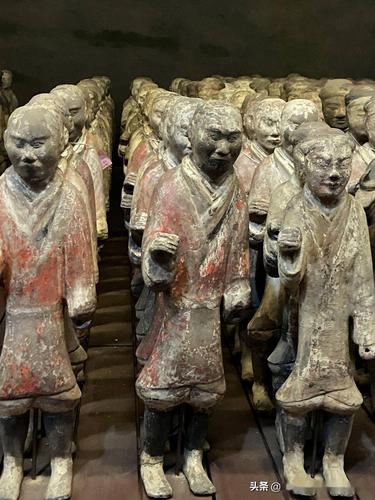
Who Was Buried with the Terracotta Army?
Platoons of clay soldiers were buried with China's first emperor, Qin Shi Huang Di, to accompany him during his eternal rest.
The Terracotta Army: A Silent Guardian for Eternity
Deep beneath the earth, outside the city of Xi'an, China, lies an army frozen in time. Comprised of over 8,000 life-sized terracotta figures, the Terracotta Army is a vast necropolis designed to protect and serve China's First Emperor, Qin Shi Huang, in the afterlife.
Each figure is unique, crafted with meticulous detail, showcasing the incredible skill of the artisans who created them over 2,000 years ago. These figures are not mere statues; they represent a real army, complete with different ranks, weaponry, and even facial expressions, ready to answer their emperor's call for eternity.
The Emperor: Qin Shi Huang, The First Emperor of a Unified China
Qin Shi Huang, born Ying Zheng, ascended the throne of the Qin state at the tender age of 13. A ruthless and ambitious ruler, he spent his reign conquering the warring states that surrounded his own, ultimately unifying China for the first time in 221 BC. This act earned him the title of "Qin Shi Huangdi" – "First Emperor of Qin."
Qin Shi Huang’s reign was marked by significant political, economic, and cultural reforms that laid the foundation for a unified China. He standardized weights and measures, implemented a single written language, and oversaw vast infrastructure projects, including the first iteration of the Great Wall. However, he was also known for his ruthlessness, crushing dissent and embracing Legalism, a philosophy that advocated strict laws and harsh punishments.
The Afterlife: A Belief in Eternal Life
Qin Shi Huang's obsession with immortality was no secret. He desperately sought the elixir of life, believing that his reign and legacy should continue for eternity. This belief was deeply intertwined with the ancient Chinese concept of the afterlife, where death was not an end but a transition.
The emperor's tomb was intended to be a microcosm of his earthly empire, replicating his palaces, officials, and even entire armies, all crafted to serve him in the afterlife. The sheer scale of the Terracotta Army and the emperor’s tomb complex reflected his desire not just for a grand afterlife but for a continuation of his earthly power.
The Discovery: A Farmer's Chance Encounter
The world remained oblivious to the grandeur of the Terracotta Army until 1974 when a group of farmers digging a well stumbled upon a cache of broken terracotta figures. What they initially thought were simple clay statues turned out to be one of the most significant archaeological discoveries of the 20th century.
The excavation of the site began immediately, revealing thousands of meticulously crafted warriors, chariots, horses, and other figures, all buried in formation, standing guard over the emperor's still-undiscovered tomb. The discovery of the Terracotta Army provided an unprecedented glimpse into the military might, artistry, and funerary practices of ancient China.
FAQs
1. Where is the Terracotta Army located?
The Terracotta Army is located in Lintong District, Xi'an, Shaanxi province, China, approximately 35 kilometers (22 miles) northeast of Xi'an city center.
2. Why was the Terracotta Army built?
The Terracotta Army was built to accompany Qin Shi Huang, the First Emperor of China, in the afterlife. They were intended to protect and serve him in his eternal reign, reflecting the ancient Chinese belief in the continuation of life after death.
3. How many warriors are in the Terracotta Army?
It is estimated that there are over 8,000 terracotta figures in the Terracotta Army, including warriors, horses, chariots, and other figures. However, only a portion of the site has been excavated, so the true number could be much higher.